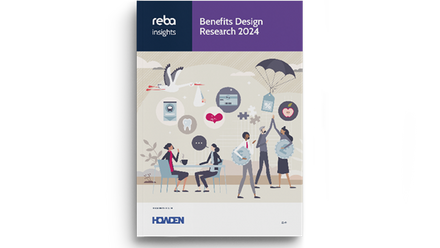The impact of lockdown on mental wellbeing and what employers can do to help

With the vast majority of office-based employees working from home for over a year, returning back to the workplace also presents its own sets of challenges. A recent CIPD report, Flexible working: lessons from the pandemic, saw that 63% of employers say they plan to introduce or expand the use of hybrid working following the pandemic, but what else can businesses do to support the mental health of their employees at this time?
Here are our tips on developing a mental wellbeing strategy.
1. Understanding employees’ needs and concerns
Understanding the key concerns of employees is crucial to the development of an effective wellbeing strategy. It’s important to recognise that people have very different experiences and needs. The priority for businesses should be focused on triaging employees to the appropriate support as quickly as possible. This is best achieved by taking a strategic approach built around the specific needs of your workforce.
Although more challenging through lockdowns, it is still possible to spot changes in employee behaviour and any potential issues arising, including:
- Encourage managers to hold regular one-to-ones and include wellbeing questions such as “how are you coping?”. This can enable managers to spot changes in an employee’s mood and how they are interacting in general.
- Look at the demographic make-up of your workforce and recognise that different groups have been affected in diverse ways.
- Surveys and employee focus groups can be a great way to understand your employees’ main concerns and the types of initiatives they would value before you invest in them.
- Look at the current level of engagement in the support and services you already have in place.
2. Assess your current support and the culture around accessing support
Next, consider how employees are currently being supported across the spectrum of proactive tools to improve their everyday health, and how you support employees when they need it the most.
Assess the culture around accessing mental health support in your business. Are the routes to accessing support clearly signposted? Are employees and managers aware of these and able to access them easily at the point of need? Are you promoting a culture where mental health can be discussed openly?
3. Identify the gaps and build a suite of support and training
Identify any gaps and opportunities in your current offering of support for employee mental health. Many mental health initiatives now offer a digital alternative to previous ‘in-office’ activities and can be adapted to suit your business’s way of working.
Initiatives need not be costly and can include online social activities, as well as facilitation of employee-led network groups, such as a parent/carer’s network or a new employee network. Networks are a great way to boost engagement and to help foster a sense of community for your employees, and senior leaders should be encouraged to sponsor or support these.
Look to upskill your managers. Managers are in a key position to create a mentally healthy workforce for the teams they look after. Ensure that they are able to feel confident in approaching an individual they have concerns about and are able to signpost to the appropriate support. A recent study revealed that online mental health awareness training was just as effective as face-to-face learning, and can provide your managers with the tools they need to address mental health needs more effectively.
4. Communicate your mental health strategy effectively
The most important factor in building a mental wellbeing strategy is to consider how best to communicate it to your employees. Lockdowns have changed the way employers communicate with employees and without an effective communication strategy in place, behavioural changes in employees could go un-noticed. Ensure that managers, as well as employees, in all locations are aware of the support in place to enhance their mental health and know how to access it when needed.
The author is Anna Spender, director of actuarial and data analytics at Howden Employee Benefits & Wellbeing.
This article is provided by Howden Employee Benefits & Wellbeing.
In partnership with Howden Employee Benefits & Wellbeing
Howden provides insurance broking, risk management and claims consulting services, globally. We work with clients of all sizes to provide dedicated employee benefits & wellbeing consultancy.







